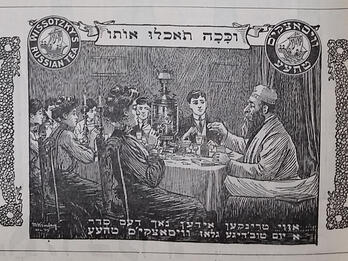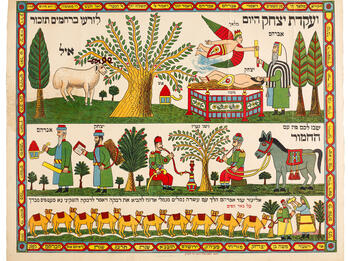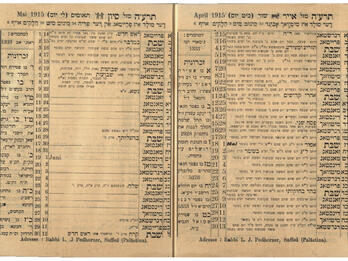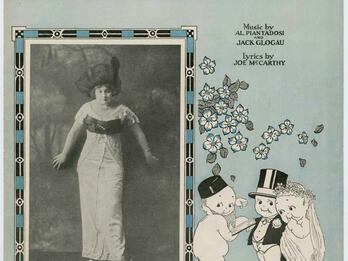Grave of the Bride and Groom
S. An-ski
1912–1913
Sensitive Content
In many shtetls throughout Podolye and Volhynia we often find a mound next to the synagogue. Surrounded by a traditional cemetery fence, the mound is known as the Grave for the Bride and Groom. And virtually the same story has been handed down in each shtetl:
During 1648 to 1649 (5408–5409), when Bogdan Khmielnítsky and his Cossack gangs charged…
Creator Bio
S. An-ski
S. An-ski (the pen name of Shloyme Zanvyl Rapoport) grew up in Vitebsk in the Russian Empire (now in Belarus) in an impoverished household. Self-educated beyond heder, he immersed himself in Russian-language radical writings and Russian populism, a strand of Russian radical politics focused on the plight and potential of Russia’s vast peasant population. In 1892 he started writing as S. An-ski, initially in Russian but also in Yiddish, while working in Western Europe with other Russian radicals. In the course of the 1890s, An-ski began to engage with Jewish politics and culture as well, writing, among many other things, the song that became the Jewish Labor Bund’s anthem “Di shvue” (The Oath). Returning to Russia during the 1905 revolution, he remained active in Russian-language politics and culture but also threw himself into Jewish cultural life as a defender (at least initially) of the revolutionary movement against Jewish critics like the liberal nationalist historian Simon Dubnov, a literary and cultural critic, and a writer of fiction focused on the Russian Jewish situation in the tumultuous present. Most importantly, he became a pioneering folklorist and ethnographer of East European Jewry’s traditional folk culture, and championed the idea that folk culture offered unique moral resources and lessons around which the modern Jewish national community should build its cultural life. In 1912, he organized—with Joel Engel, Solomon Yudovin, and Avrom Rechtman—a pioneering and high-profile ethnographic expedition through Jewish Ukraine that collected thousands of folktales, folk songs, and ritual objects; took some two thousand photos; and recorded folk music. An-ski worked tirelessly as a relief worker during World War I, recording his experiences in a diary that would later become Khurbn Galitsye (1920), his account of wartime antisemitic persecutions by Russian and Austrian forces and the final ruination and profanation of Jewish shtetl life and traditional folk culture. From 1913 to 1917 he worked and reworked his most famous achievement, the folkloric-symbolist drama of greed, love, death, and mystical bonding and bondage known as Between Two Worlds or The Dybbuk. Written in Russian and Yiddish, it first became widely visible in a Hebrew translation made by Chaim Nahman Bialik and adopted as a canonical work by the Habima Troupe, the pioneering Hebrew-language symbolist theater troupe founded in wartime Russia in 1916. Shortly thereafter, An-ski’s own final Yiddish version became an equally central work in the budding Yiddish art theater scene. In 1937, a film version of The Dybbuk made in Poland became one of the crowning works of Yiddish film.
This story, one of thousands obtained by S. An-ski in his 1912–1914 ethnographic expedition, was originally related to him by now-anonymous storytellers from Podolye or Volhynia.
You may also like

And This Is How You Shall Eat It (Exodus 12:11)
Cohen on the Telephone

Akedah Story
The Great Sea Misfortune of the Titanic

Almanac for the Year 5675



